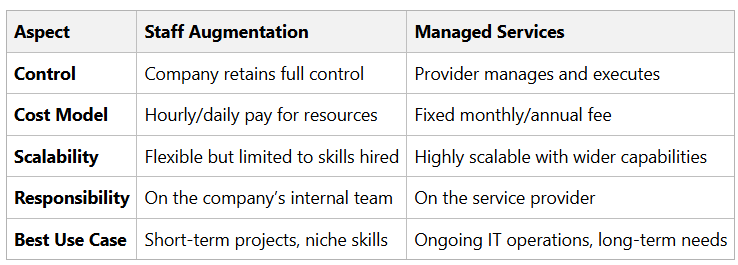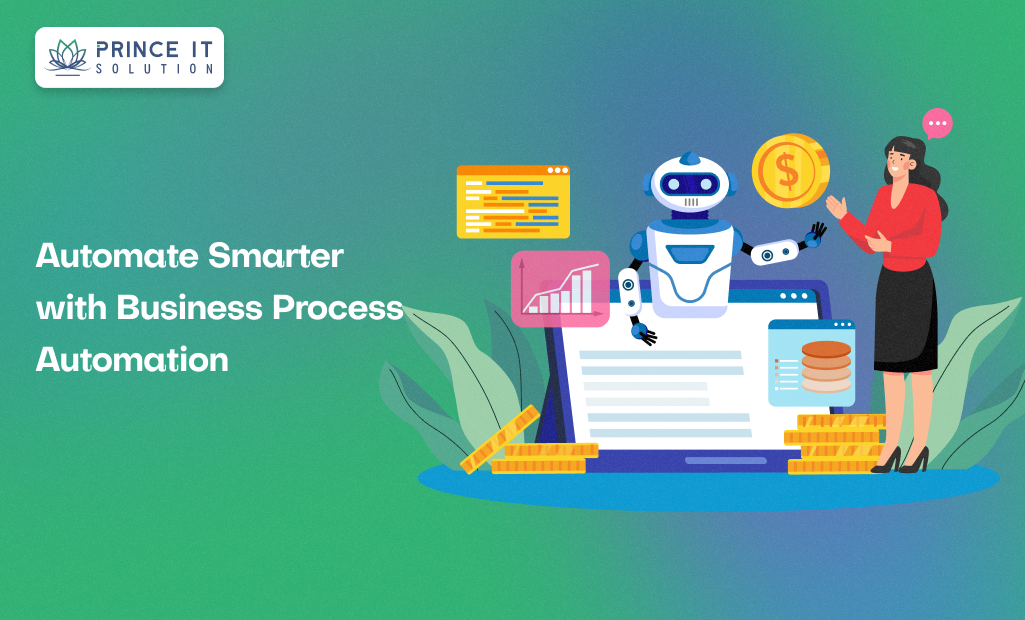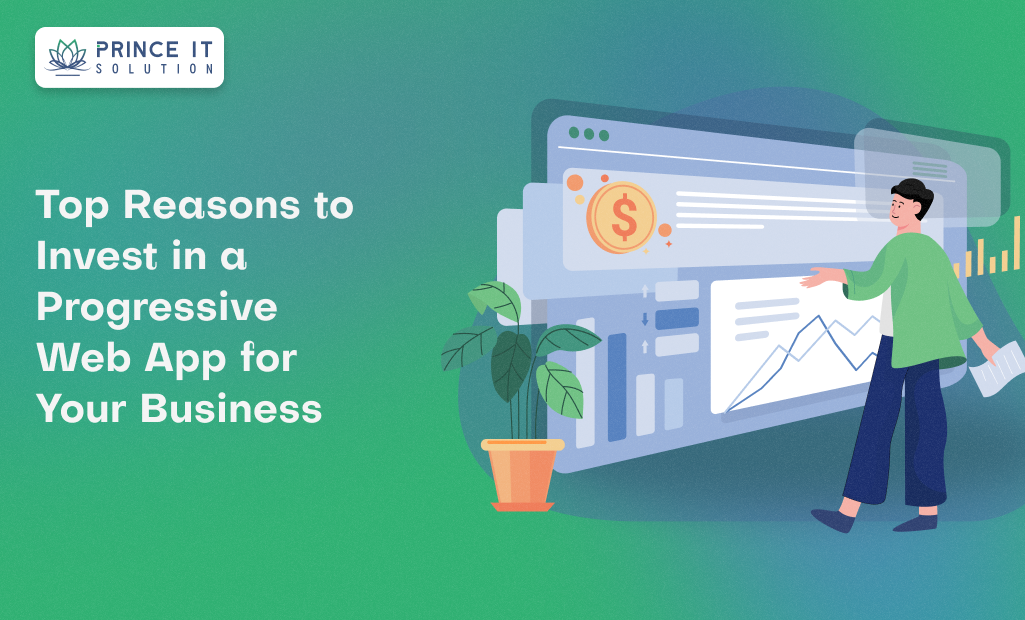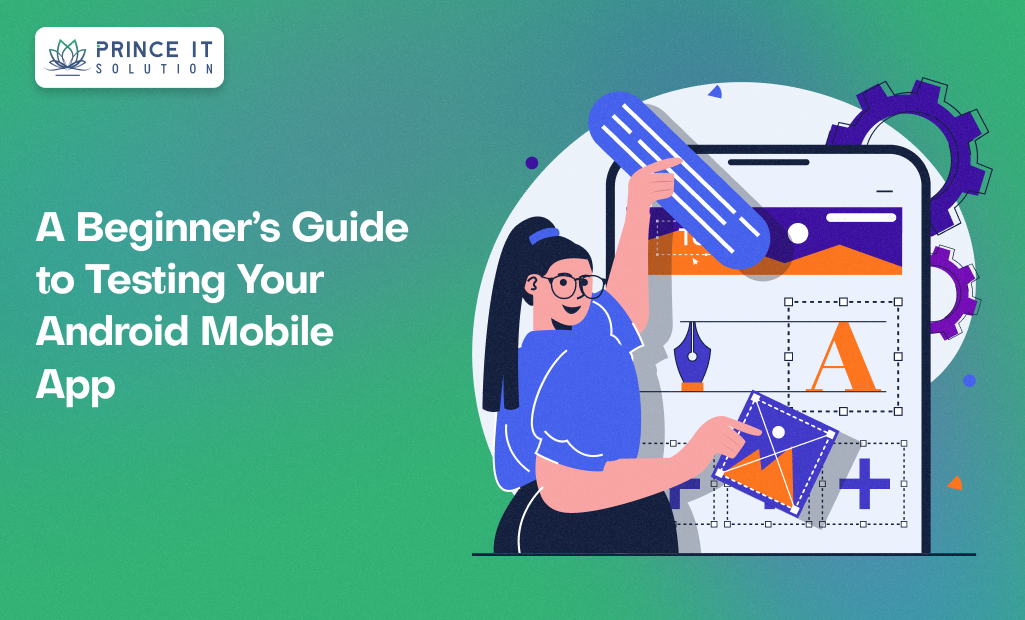Introduction
In today’s fast-changing IT landscape, businesses often face the challenge of choosing the right service model to meet their technology needs. Two of the most popular models are Staff Augmentation and Managed Services. While both approaches aim to fill talent gaps and support business goals, they differ in scope, responsibility, cost, and flexibility. Understanding these differences can help companies make smarter decisions for their growth and digital transformation.
What is Staff Augmentation?
Staff Augmentation is a flexible outsourcing model where companies hire external professionals temporarily to strengthen their existing teams.
Key Traits: Short-term contracts, direct control, pay-as-you-go model.
Best For: Businesses needing quick talent to cover skill shortages, short projects, or sudden workload spikes.
Pros:
Faster hiring of niche talent
Full control over project execution
Cost-effective for short-term needs
Cons:
Training may be required
Management burden remains on the company
What are Managed Services?
Managed Services go beyond staffing by outsourcing the entire IT function or process to a service provider. Here, the provider takes end-to-end responsibility for delivering outcomes.
Key Traits: Long-term partnership, proactive management, predictable pricing.
Best For: Businesses seeking to offload IT management, cybersecurity, cloud operations, or 24/7 monitoring.
Pros:
Provider handles everything (less burden on internal teams)
24/7 support and scalability
Focus on core business growth
Cons:
Less direct control
Higher upfront costs
Staff Augmentation vs Managed Services: Key Differences

Which One Should You Choose?
Choose Staff Augmentation if: You need temporary skills, want full control, or have a short project.
Choose Managed Services if: You want ongoing support, need expertise in IT operations, or prefer to focus on your core business.
Conclusion
Both Staff Augmentation and Managed Services play vital roles in IT strategy. The right choice depends on your company’s size, budget, project duration, and goals. Some businesses even use a hybrid model, blending staff augmentation for short-term tasks and managed services for long-term IT stability.
By carefully evaluating your needs, you can select the model that delivers maximum efficiency, cost savings, and growth potential.



